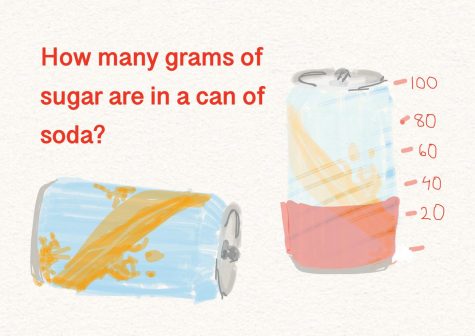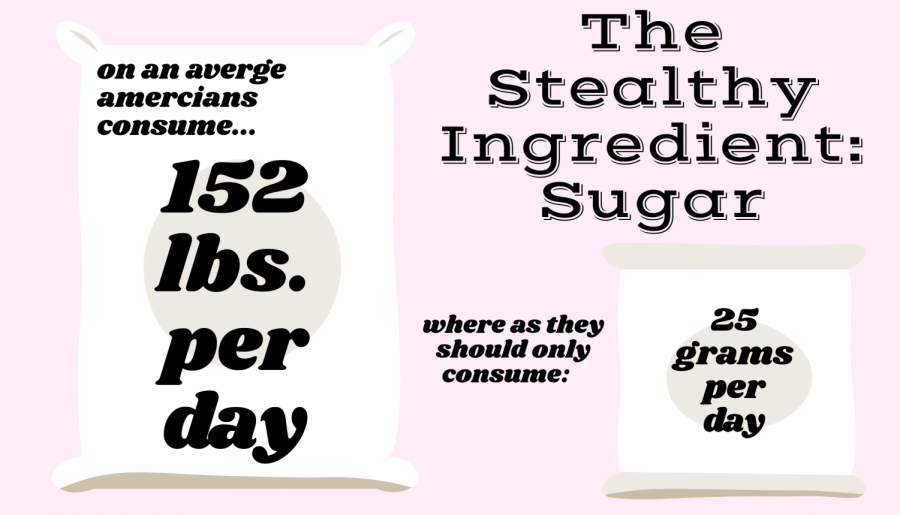The Stealthy Ingredient
The Story of America’s Sweet Tooth
sugar is an addiction every american seems to have.
What do cereals, ketchup, and fruit juice all have in common? The hidden additive to each of these foods is…sugar.
Daily, 152 pounds of sugar are consumed per person in America. Not surprisingly, the United States has been the leading country in terms of sugar intake since at least 1961, when many coalitions such as the United Nations first began monitoring the world population’s sugar intake.
In contrast to the levels of sugar consumption in the past, children between the ages of 2-18 are now accustomed to a variety of soft drinks, cereals, and processed foods that far exceed the American Heart Association’s recommended daily dosage of 25 grams a day. Sweets and fizzy drinks alike are sources of exorbitant amounts of sugar, calories, and little else.
Most people consider sugary foods a staple to their diet and evidently, the human brain is wired to accord. Lactose, fructose, and sucrose types of sugar are all well-documented triggers of the mesolimbic dopamine system, by which hormones like dopamine are released in response to an event and cement the habit for future scenarios.
For children in particular, the appetite for liberal doses of sugar is ingrained in more ways than one. Baby formula, usually an individual’s earliest introduction to convenience food, contains high amounts of sugar and once a child becomes accustomed to more palatable formula milk, parents are hard-pressed to wean them off. As kids grow older, the spike in activities outside the home drains one’s time to the extent that it becomes second nature for young adults to quickly swig sugary drinks or munch energy-boosting processed goods as they are available.
Published five years ago in the Learning and Memory journal, a scientific experiment conducted on laboratory rats found that eating sugar prevented their ability to recognize the same objects in different settings. Four years later, an article published in Physiology and Behavior explored the link between routine indulging of sweets and a craving for more of the same in between meals.
Notably, sugar intake is correlated with a neural response in the nucleus accumbens of the brain, which happens to be the same region that drugs activate. Similarly, attempts to drastically cut down on sugar are more often than not met with physical symptoms of withdrawal such as impaired cognitive function and lethargy.
By all accounts, the numbers of packaged food with added sugar has today

risen to almost 75% of all the options consumers encounter on grocery shelves. According to the Iowa Clinic, those who are convinced they need to cut down on sugar in their diet should start with liquid calories, which can be found everywhere from soda and sparkling juice to chocolate milk.
Dr. Nasser Khan, a pediatrician at the Iowa Clinic, attests to the fact that cons
umed sugar is correlated with a spike in blood pressure. Of all the forms sugar comes in, the empty sugar calories of liquids dissolve most rapidly into the bloodstream, so a reduction in liquid sugar calories makes a tangible impact right away.
Some of the top sugar substitutes according to the Food and Drug Association
include saccharin, aspartame, sucralose, neotame, and acesulfame potassium have the same effects on the human body, occasionally with less calories than sugar yet always many times sweeter. Ordinarily, the human body monitors the amount of calories as a factor in gauging satiety, thus usefully preventing one from eating beyond a healthy threshold. Accordingly, sugar alternatives come with their own set of challenges for the consumer to navigate.
In the end, while sugar is an almost ubiquitous additive to the average citizen’s diet, increased education on the negative effects sugar has on the human system and recognition of the where it accumulates in food is the first step to making the best decision possible for one’s future.




